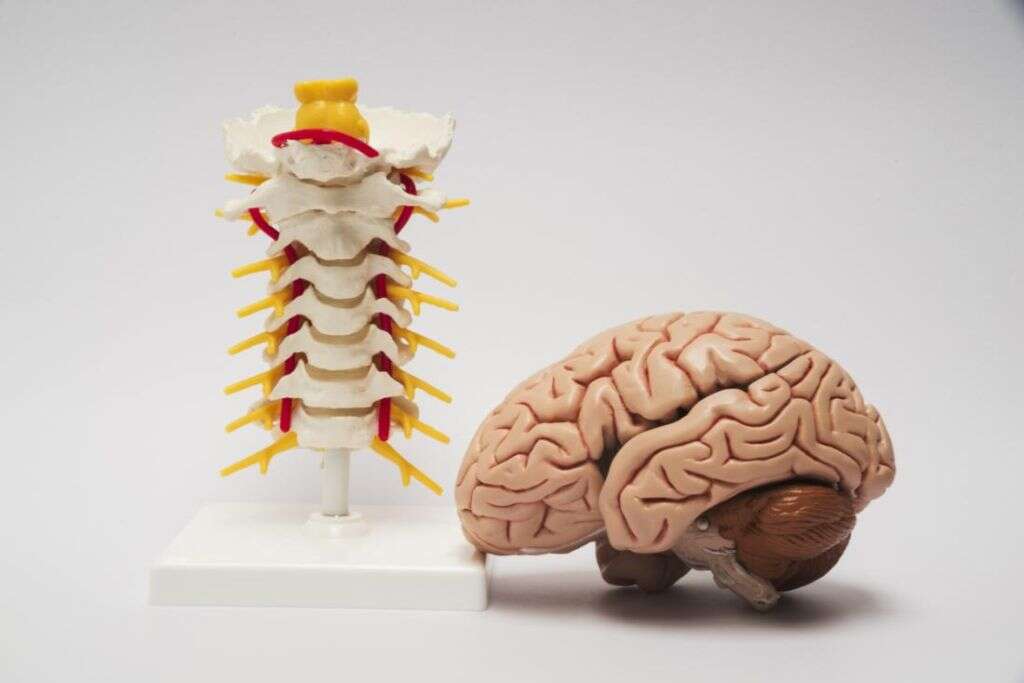Zellweger Syndrome Symptoms
Having a baby is supposed to be one of the most precious times in life for parents. This time of new beginnings can, however, portend tragedy when it becomes clear that not all is well. Mutations in genes can be particularly devastating as the resulting defects are often incurable.
Zellweger syndrome is the most extreme of conditions on the Zellweger spectrum. It manifests in newborns with symptoms that affect both the outward appearance and internal organs. This particular condition typically occurs on the PEX1 gene, but can also occur on at least 11 others. Children born with this mutation rarely survive past the first year. Let us look at some of the key symptoms that characterize the syndrome.

1. Poor Muscle Tone
One of the signs of a healthy baby is the ability to wriggle around. This activity is a good indicator that all the limbs are working well and there is good muscle formation. With weakened muscles or hypotonia, you will likely find it more difficult to keep hold of the baby. There is a general sense of floppiness to the baby’s body that should be evident within hours of the birth. It can also make it difficult for the baby to feed due to challenges maintaining a sucking motion for extended periods. This lack of muscle support also makes it more challenging for the child to later support their head and remain in a seated position without toppling over.

2. Seizures
When people think of seizures it often brings to mind the thrashing and foaming at the mouth that is seen during epileptic fits. This symptom can be very scary for many parents to observe in their baby, knowing there is nothing they can do to help.
When it occurs in children, it usually takes the form of uncontrollable body movements and sometimes a loss of consciousness. Abnormal brain development is what often leads to the occurrence of these seizures. They tend to begin during the first 4 weeks of the baby’s life and are thus referred to as neonatal seizures.

3. Craniofacial Features
The majority of illnesses are not evident on sight until the patient has had a chance to describe their symptoms. Others like Zellweger can, however, be deduced based on the facial characteristics of the child. Common features include a high forehead, flattened face, upward slanting eyes, broad nose, and epicanthal folds.
They also tend to have protruding tongues, jowly cheeks, low set ears, and a large soft spot, or fontanelle. Some babies will also be born with abnormally small or large heads. This is referred to as microcephaly or macrocephaly, respectively. These are amongst the first clear indicators from birth that a baby may suffer the syndrome.

4. Vision Problems
The eyes of a baby tend to develop slowly. They gradually learn over time how to focus on objects, distinguish colors, and track movement. While these abilities are limited at birth, it does not take long before you start to see progress. With stimulation like mobiles over a crib and parents playing peekaboo, a baby’s vision should steadily improve.
For children with the Zellweger syndrome, the opposite is true. They begin to suffer deteriorating vision loss that is characterized by conditions like cataracts and glaucoma. Nystagmus is an uncontrolled and jerky movement of the eyeball that is another common vision problem. It contributes to an inability to maintain balance.

5. Enlarged Liver
Organ complications are not as obvious but can often be indicated by other symptoms. Liver dysfunction is a common symptom that tends to become worsened around the age of 3 months. This is when yellowing of the skin, or jaundice, is most evident. It is often accompanied by enlargement and pain around the stomach area. Liver cysts will often form and can easily be discerned using an ultrasound.
Liver failure is often one of the conditions that will lead to death in Zellweger syndrome sufferers. Liver transplants have, however, proven helpful in extending the life of those on the lower end of the spectrum.

6. Intellectual Disability
As a baby grows, they will mark several developmental milestones that point toward a growth in intellect. While babies may not be ready just yet for an IQ test, certain signs should indicate their development in memory, imagination, problem-solving, and judgment.
From tracking moving objects to getting excited about seeing a familiar face, there are many ways you can tell your child is doing well even when they are just weeks old. For those with Zellweger syndrome, this development is stunted. This problem is sometimes so bad that a child can be classed as being mentally retarded.

7. Skeletal Abnormalities
Besides the craniofacial deformities that have been mentioned, a baby with Zellweger syndrome will also tend to suffer bone defects in the hands, legs, and feet. They often have low bone density and will experience chondrodysplasia punctata.
This condition stunts growth and can contribute toward mental infirmity, itchy and scaly skin, and cause vision problems. Problems such as clubfoot are another common sign of skeletal abnormalities. Contracture deformities also affect the stability and support of joints. These affect the muscles, tendons, and ligaments that are responsible for facilitating smooth joint movement. Orthopedic treatment is often required throughout the life of the child.

8. Difficulty in Feeding
In the early months, parents must devote a lot of time to feeding, sometimes as often as twelve times a day. This allows for steady weight gain that is a sign of healthy development. Due to the low muscle tone in children with Zellweger syndrome, it becomes difficult to maintain sucking motions for any long period.
This will often sabotage the growth of the child as they are unable to get enough nutrition. The problem is also often accompanied by difficulty in swallowing. It is not uncommon for these babies to end up needing a feeding tube to ensure that their calorie needs are being met.

9. Central Nervous System (CNS) Malfunction
The CNS is primarily made up of the brain and spine. It is what connects body and mind, giving commands for movement and registering sensory signals. Our nerves are insulated by a substance called myelin that facilitates the transmission of signals.
When it is reduced, a person suffers from hypomyelination that is often characterized by developmental delays, hearing, and vision loss. One of the clearest indicators of CNS problems in Zellweger syndrome patients is the inability to properly control body movement. There is also the difficulty in registering visual and sound stimuli. The genes that mutate to cause the syndrome are responsible for the poor creation and function of myelin.

10. Gastrointestinal Bleeding
Blood in the stool can be scary enough for an adult, let alone a child. It is not always easy to spot, but will often make the stool appear very dark, or tarry. Gastrointestinal bleeding in Zellweger syndrome sufferers has been linked to a deficiency in the coagulation factor in the blood.
It can occur anywhere along the GI tract, from the mouth to the anus. The blood can also come up in vomit, appearing to be red or brownish. This problem also contributes to kidney problems. This condition may start out mild, but will often become more severe with hemorrhaging likely to occur.












